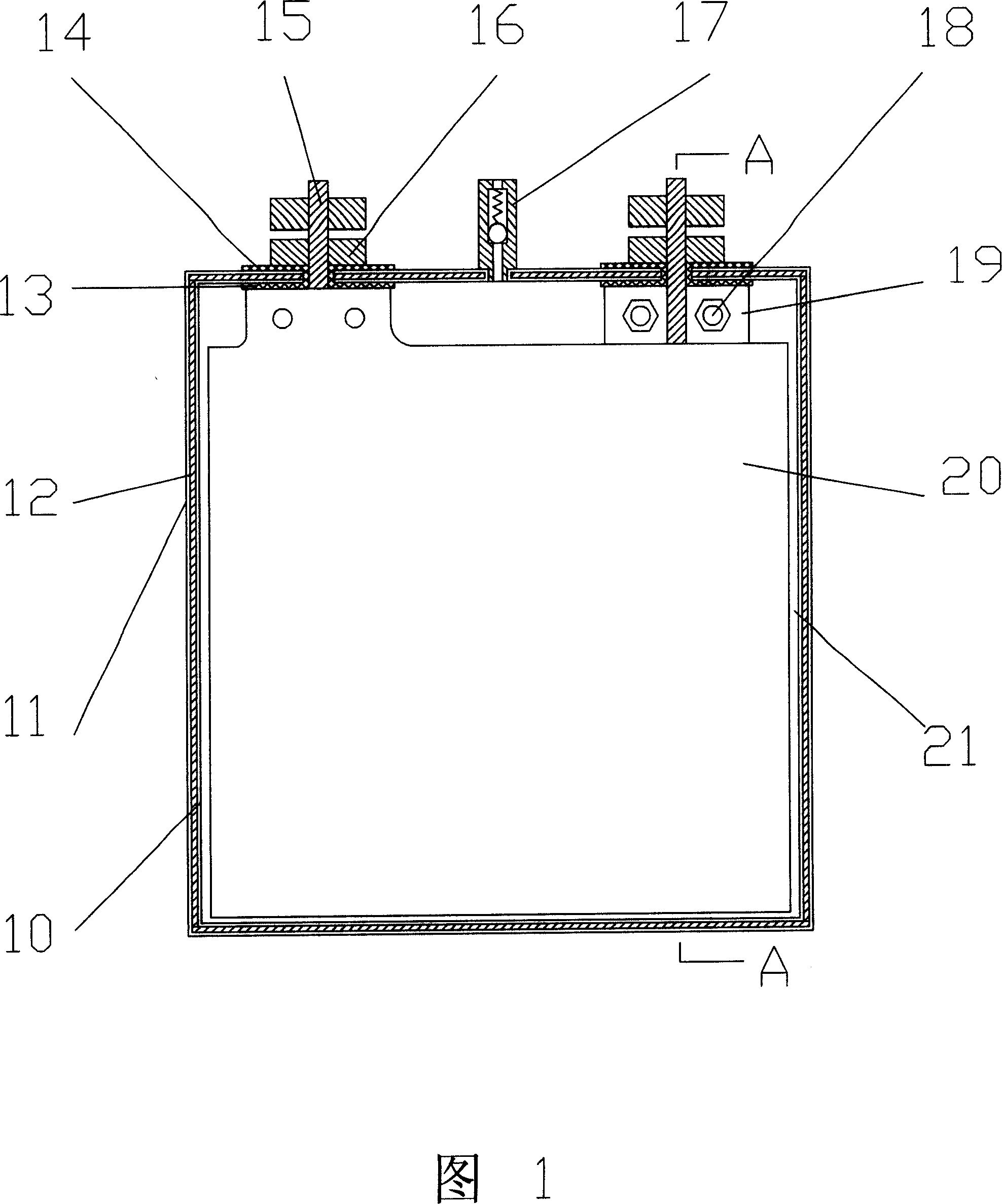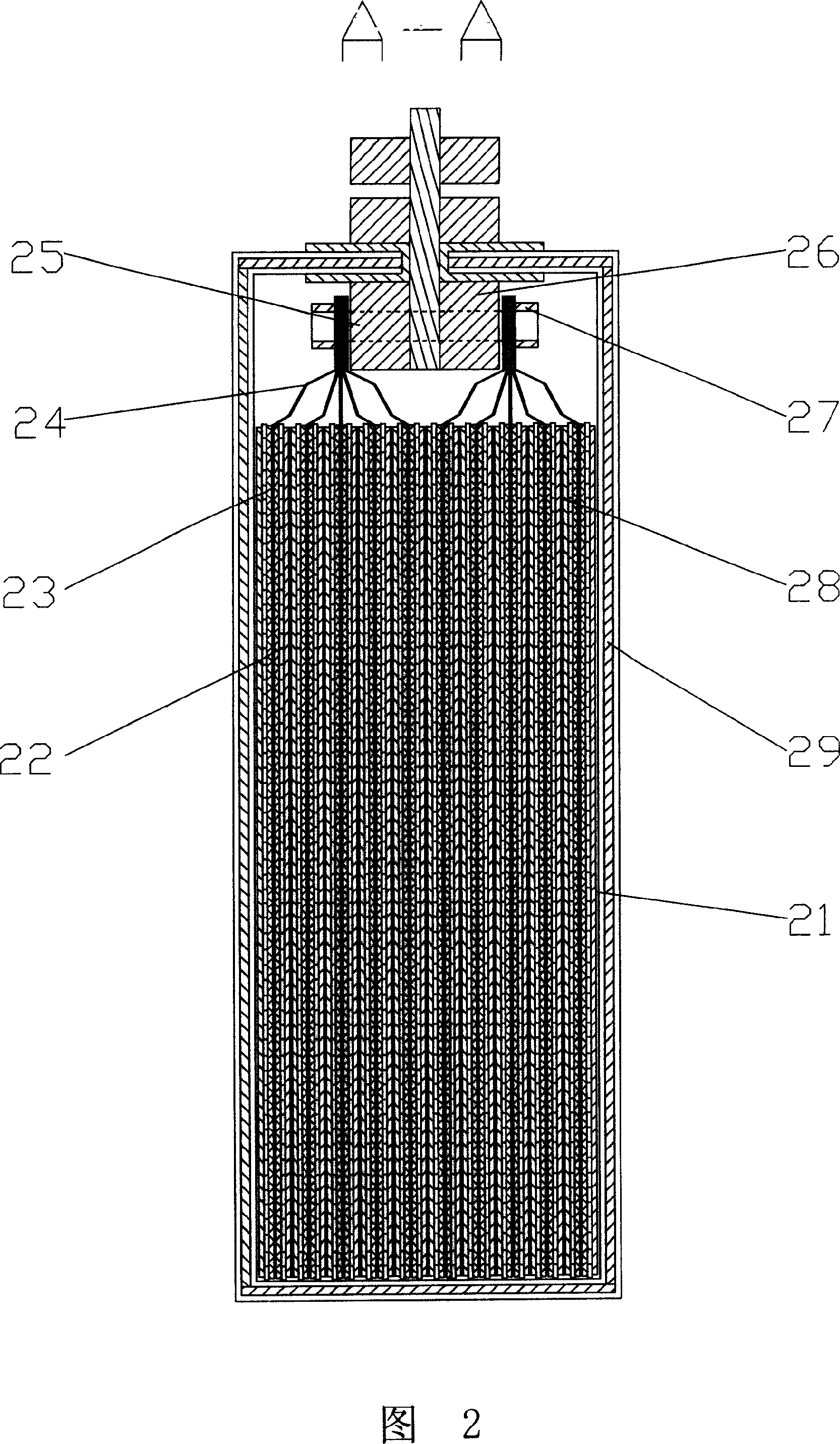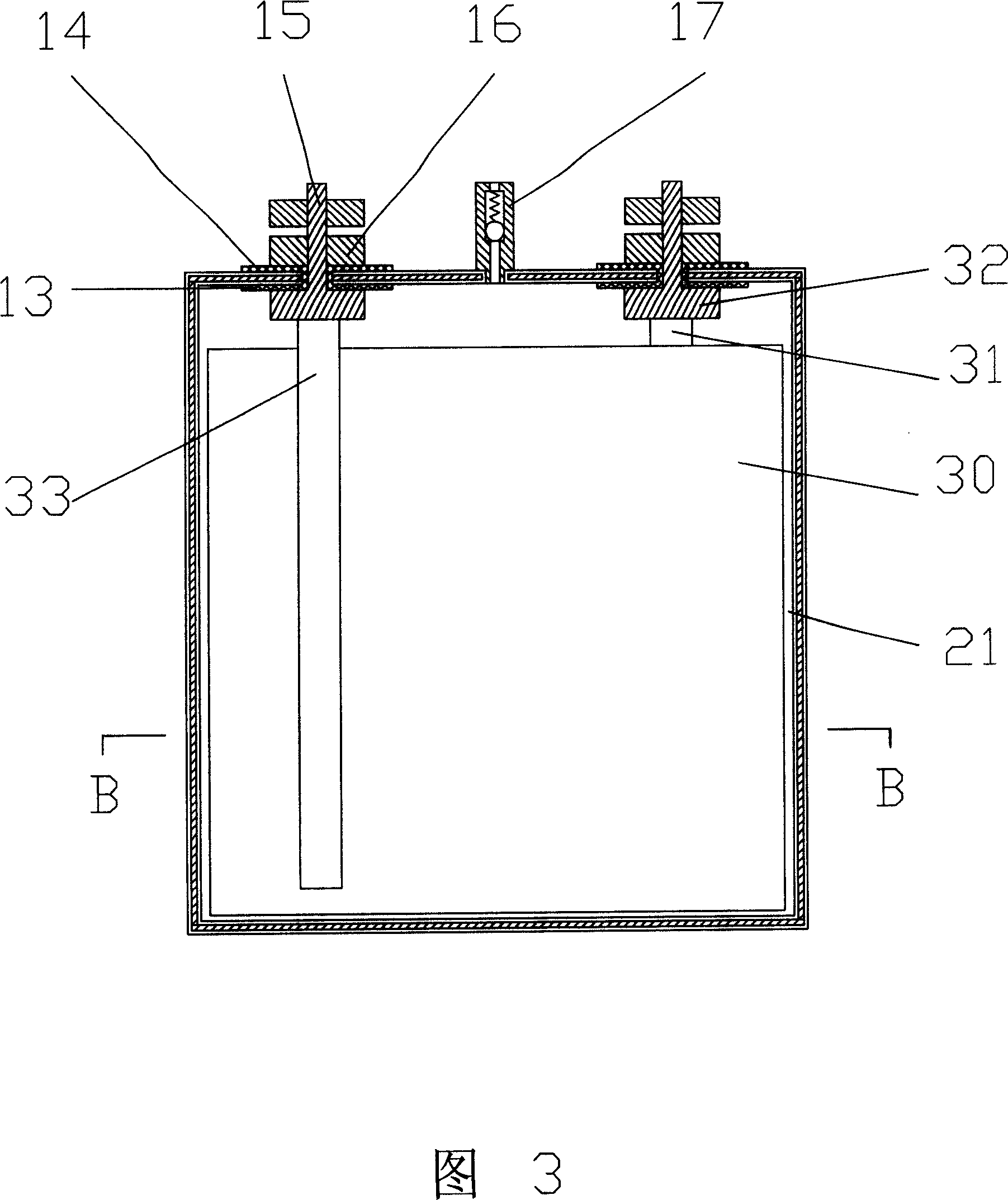Colloidal electrolyte lithium ion electrokinetic cell for electric vehicle
A colloidal electrolyte and power battery technology, applied in non-aqueous electrolyte batteries, electrolyte battery manufacturing, secondary batteries, etc., can solve the problem of poor technical performance and safety performance of battery packs, deterioration of battery consistency, changes in battery internal resistance, etc. question
- Summary
- Abstract
- Description
- Claims
- Application Information
AI Technical Summary
Problems solved by technology
Method used
Image
Examples
example 1
[0069] Manufacturing method of negative electrode sheet:
[0070] Dissolve 1560 grams of polyvinylidene fluoride in N-methyl-2-pyrrolidinedione, first add 20 grams of oxalic acid, then add 500 grams of acetylene black, and finally add 22000 grams of graphite powder. After high-speed stirring, vacuum or static degassing, the slurry-like negative electrode slurry is made. The negative electrode slurry was coated on both surfaces of a 16 micron thick copper foil. The solvent N-methyl-2-pyrrolidinedione was dried and removed at 120° C., and the thickness of the electrode strip was controlled at 200±10 microns. The thickness of the electrode strip after rolling is controlled at 100±5 microns. Cut the negative electrode strip into a kitchen knife shape: the handle is an uncoated copper foil, used as a current collector, with an area of 20×35mm 2 ;The kitchen knife is an electrode piece, with an area of 156×266mm 2 .
[0071] Manufacturing method of positive electrode sheet:...
example 2
[0082] Manufacturing method of negative electrode sheet:
[0083] Dissolve 1,560 grams of polyvinylidene fluoride in N-methyl-2-pyrrolidinedione, first add 20 grams of oxalic acid, then add 500 grams of acetylene black, and finally add 15,000 grams of amorphous tin-lithium composite oxidation SnLi ρ P B χ o ψ . After high-speed stirring, vacuum or static degassing, the slurry-like negative electrode slurry is made. The negative electrode slurry was coated on both surfaces of a 16 micron thick copper foil. The solvent N-methyl-2-pyrrolidinedione was dried and removed at 120° C., and the thickness of the electrode strip was controlled at 150±10 microns. The thickness of the electrode strip after rolling is controlled at 80±5 microns. Cut the negative electrode strip into an area of 84×266mm 2 Strip electrodes. A nickel lead is then spot welded to the uncoated starting copper side.
[0084] Manufacturing method of positive electrode sheet:
[0085] 3650 grams of po...
PUM
| Property | Measurement | Unit |
|---|---|---|
| Thickness | aaaaa | aaaaa |
| Width | aaaaa | aaaaa |
| Power density | aaaaa | aaaaa |
Abstract
Description
Claims
Application Information
 Login to View More
Login to View More - R&D
- Intellectual Property
- Life Sciences
- Materials
- Tech Scout
- Unparalleled Data Quality
- Higher Quality Content
- 60% Fewer Hallucinations
Browse by: Latest US Patents, China's latest patents, Technical Efficacy Thesaurus, Application Domain, Technology Topic, Popular Technical Reports.
© 2025 PatSnap. All rights reserved.Legal|Privacy policy|Modern Slavery Act Transparency Statement|Sitemap|About US| Contact US: help@patsnap.com



